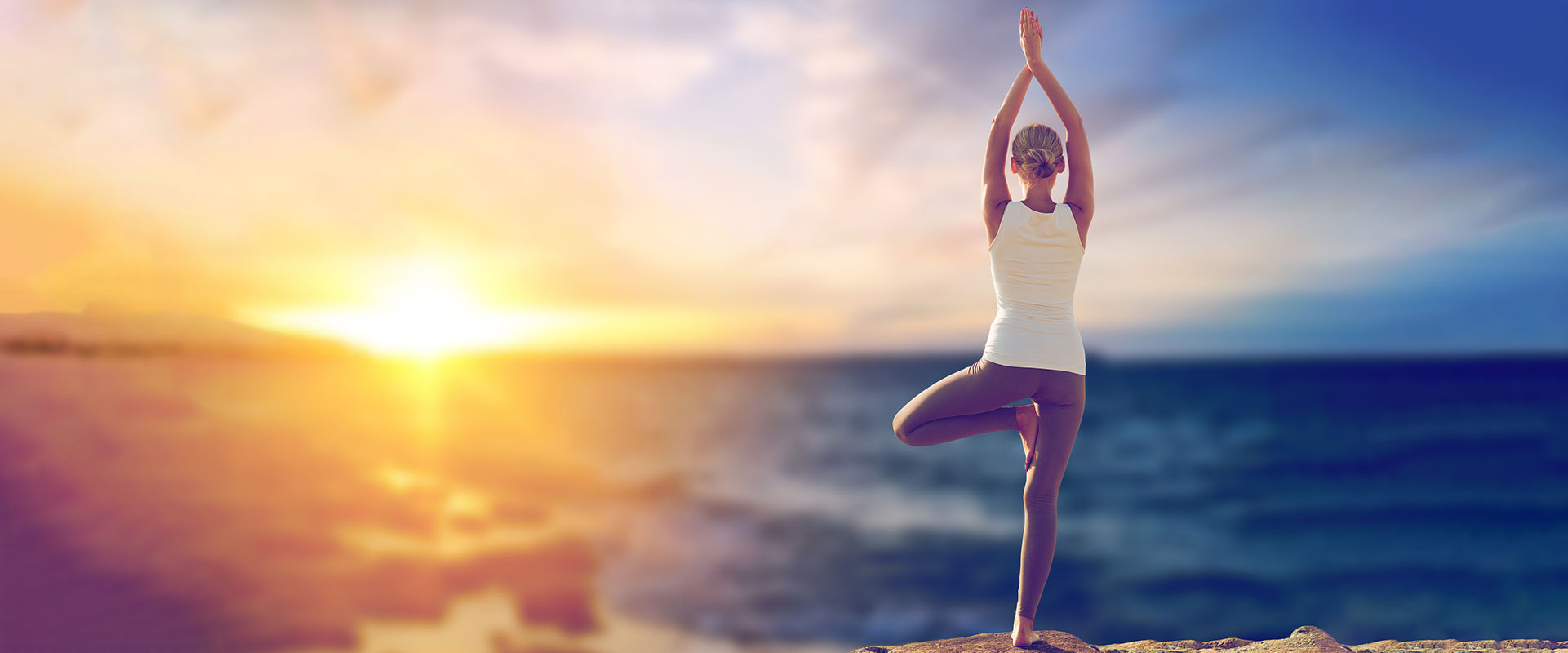
Yoga is a set of practises that originated in ancient India with various branches of Yoga emerging in different centuries. These branches are practised by various schools of Yoga with set goals in Hinduism, Buddhism and Jainism. These are all a group of physical, mental and spiritual disciplines. Yoga is mentioned in the scriptures of Rigveda, Hindu Upanishads, Buddhist Pali canon, Hath Yoga and Raja Veda. Till the late 19thcentury, Yoga was practised only in India, but after early 20th century, the knowledge and practises of Yoga were broadened by Swami Vivekananda to the western countries and Yoga became a popular concept in the west.
Yoga is not only a practise of physical exercise, but it also teaches the methods of meditation and spiritual awareness. Yoga is proven to avoid risks involved with various ailments and assist the psychological healing process in the human body. The Sanskrit meaning of Yoga refers to the act of adding or uniting and further on has been given many references to combining or to attaching and has further given rise to many compound words like “Pumyoga” or the “Kriyayoga”. It is balanced practise of activities performed as daily duties or routine and hence is also termed as “union with the supreme”. In December 2016, Yoga was listed as a tangible cultural heritage in UNESCO.
The ancient form of Yoga is explained in short as a means to achieve the following goals.
-
A set of meditative practises to achieve inner peace, overcoming suffering, liberating the mind and body and achieving salvation.
-
An awareness of co-existing with the surroundings consciously.
-
A method to enlighten self by understanding the permanent and the impermanent truth of nature.
Among the various forms of Yoga that exist, at Green Gram Wellness Village, we primarily practise Ashtanga Yoga. Ashtanga Yoga was taught by the Great Teacher Patanjali and is described in the “Yoga Sutras of Patanjali”. It is also known as “Raja Yoga” which means yoga for the kings and is associated to the ultimate objective of attaining “Samadhi” which is the state of powerful concentration. Ashtanga Yoga is a set of ethical practises and self development techniques for the body, mind and spirit.
Mythology suggests that long time ago, the Ayurvedic experts, who were referred to as Rishis and Munis approached Lord Vishnu to inform him that even though he incarnated as Lord Dhanvanthari and had given them the means to treat ailments with the help of Ayurveda, people were still suffering. Seeking Lord Vishnu’s guidance, they asked what measures can be taken to treat ailments that the people were suffering from. They shared their observations that the ailments were not just physical, but were also emotional and psychological impurities like anger, greed, jealousy, lust etc. Lord Vishnu heard the concerns of the Rishis and the Munis as he rest on the Infinite Cosmic Serpent – the Adi Shesha and later on gave them Adi Shesha as a symbol of awareness who was born as Maharishi Patanjali on planet earth.
Ashtanga yoga has been outlined in the Yoga Sutras by Maharishi Patanjali as the "eight-limbed yoga". It is the path of Internal Purification for revealing the Universal Self and consists of the eight spiritual practices namely Yama (Moral codes), Niyama (self study and purification), Asana (posture), Pranayama (breath control), Pratyahara (sense control), Dharana (concentration), Dhyana (meditation) and Samadhi (absorption into the Universe). According to the Yoga Sutras, Yama, Niyama, Asana and Pranayama are considered the first four limbs and consist of external cleansing practises. Patanjali has precisely explained that defects in the external practises are correctable while defects in the internal cleansing practices Pratyahara, Dharana, Dhyana (which form the remaining limbs of Ashtanga Yoga) are not correctable and can be dangerous to the mind unless the correct Ashtanga yoga method is followed.
Yoga is defined as the technique of controlling the mind. It is also known as Chitta Vrtti Nirodha in Sanskrit which means the supreme union of absolute understanding. Perfecting Yama and Niyama are the first two steps toward controlling the mind. However, it is not possible to practice the limbs and sub-limbs of Yama and Niyama when the body and sense organs are weak and troubled by complications. Hence, a person must first practice asanas daily to make the body strong, healthy and stabilise the body. Once the body is at equilibrium, the mind can be controlled and a steady pattern can be maintained. With a balanced and controlled mind, one is able to pursue and grasp the first two limbs Yama and Niyama. At Green Gram Wellness Village, we help our guests to learn all aspects of Yoga so that they can make it a part of their lifestyle. We ensure that the Yogam or union of Yoga and Ayurveda gives astounding results to our guests.

